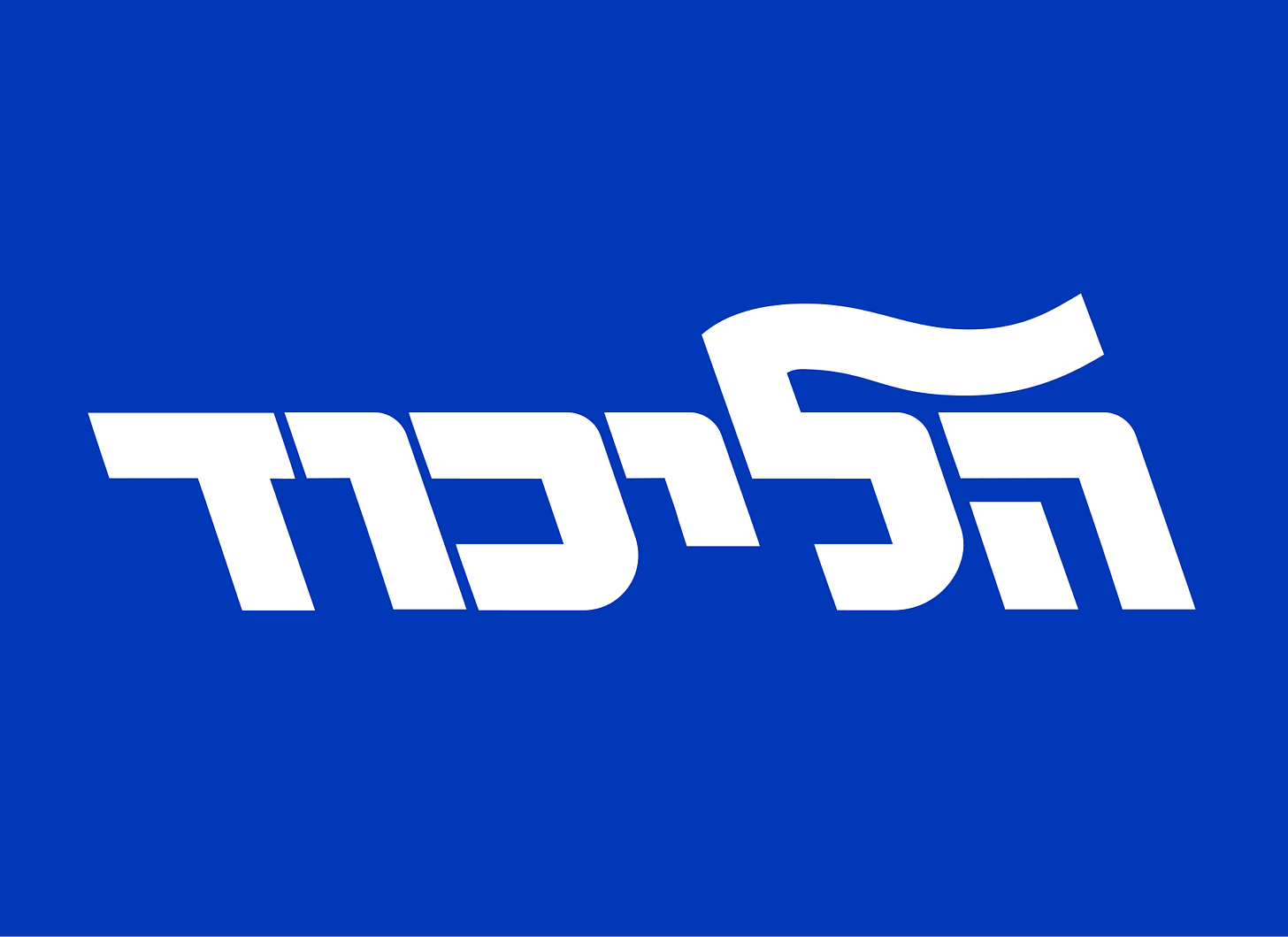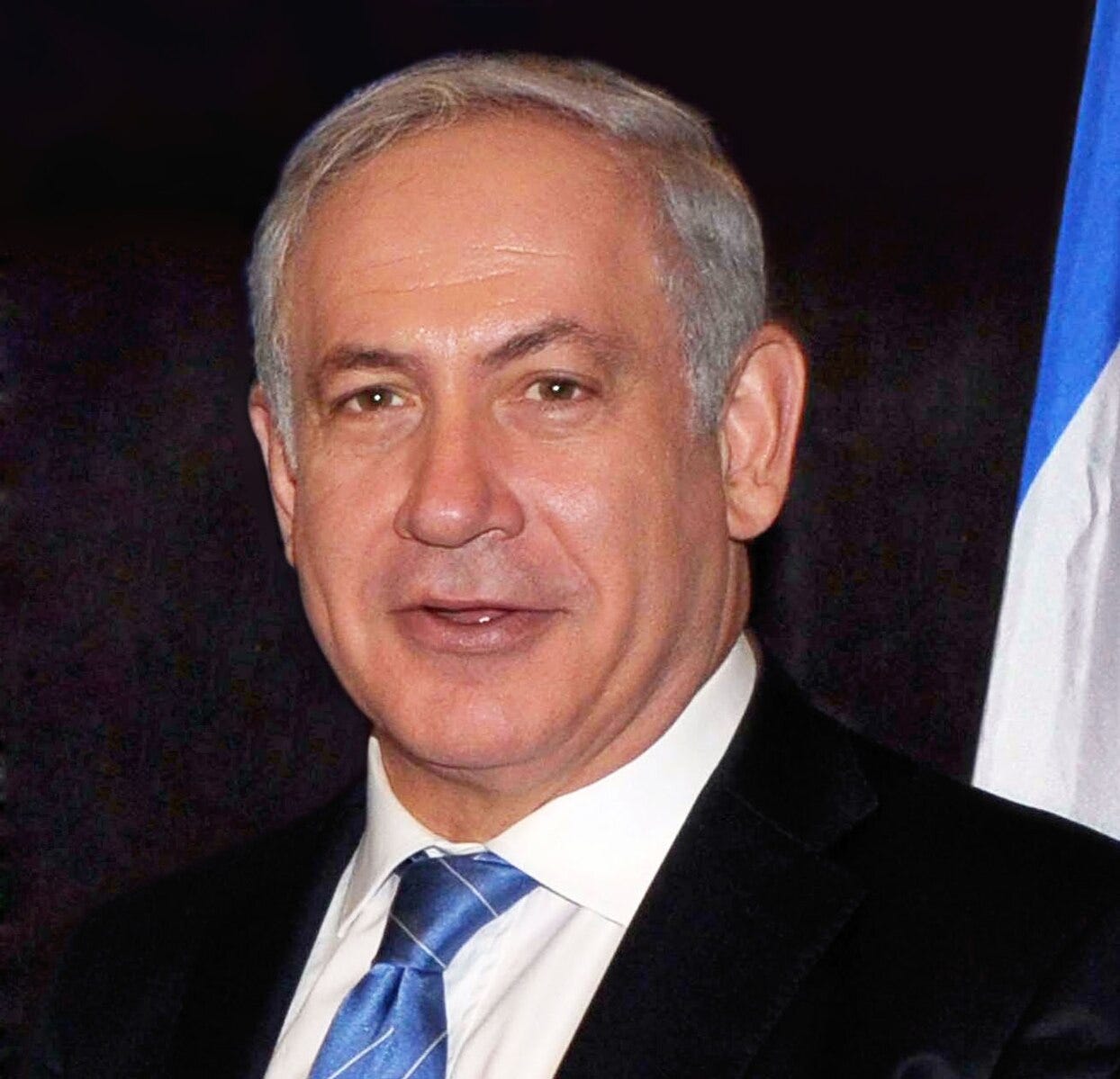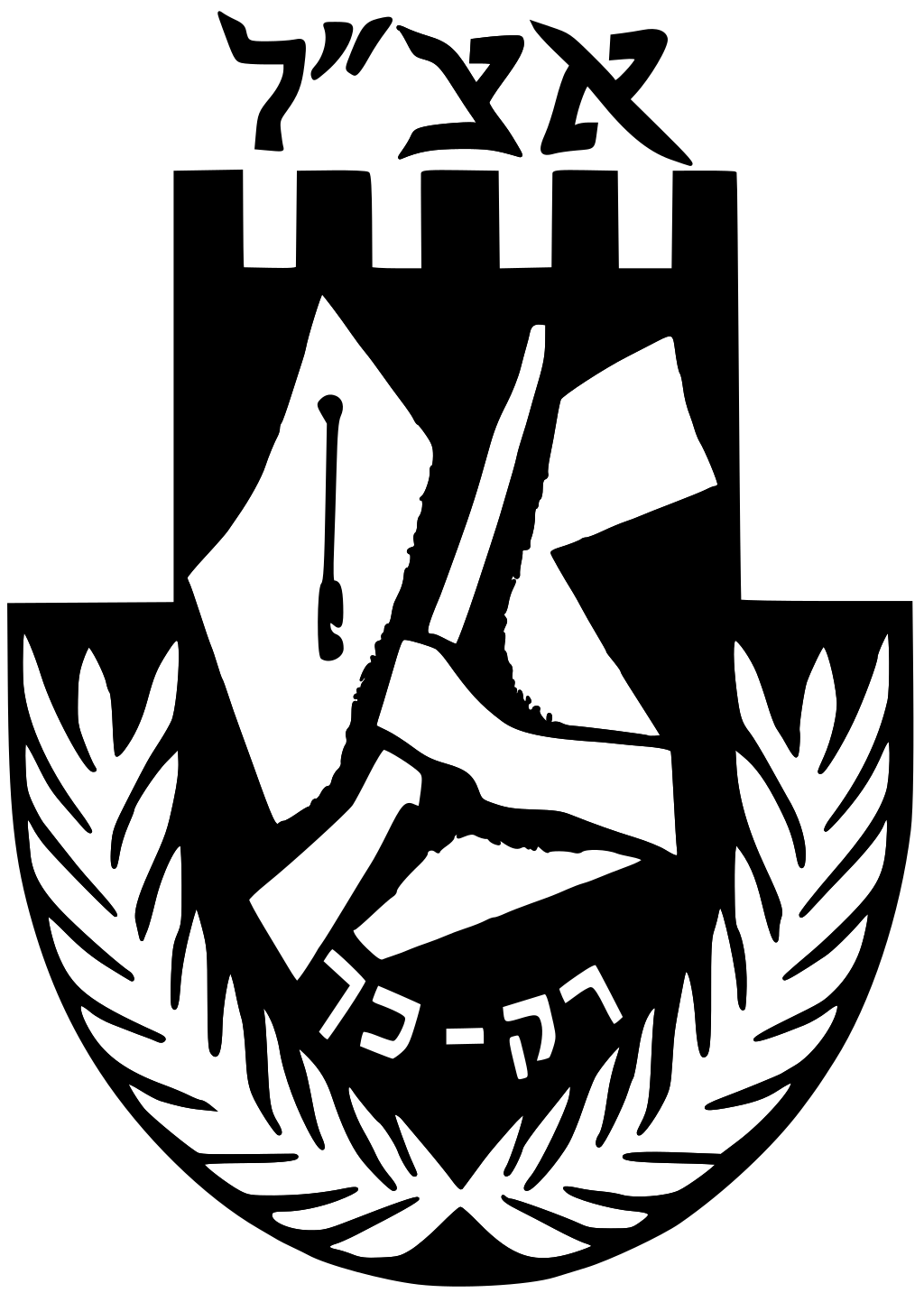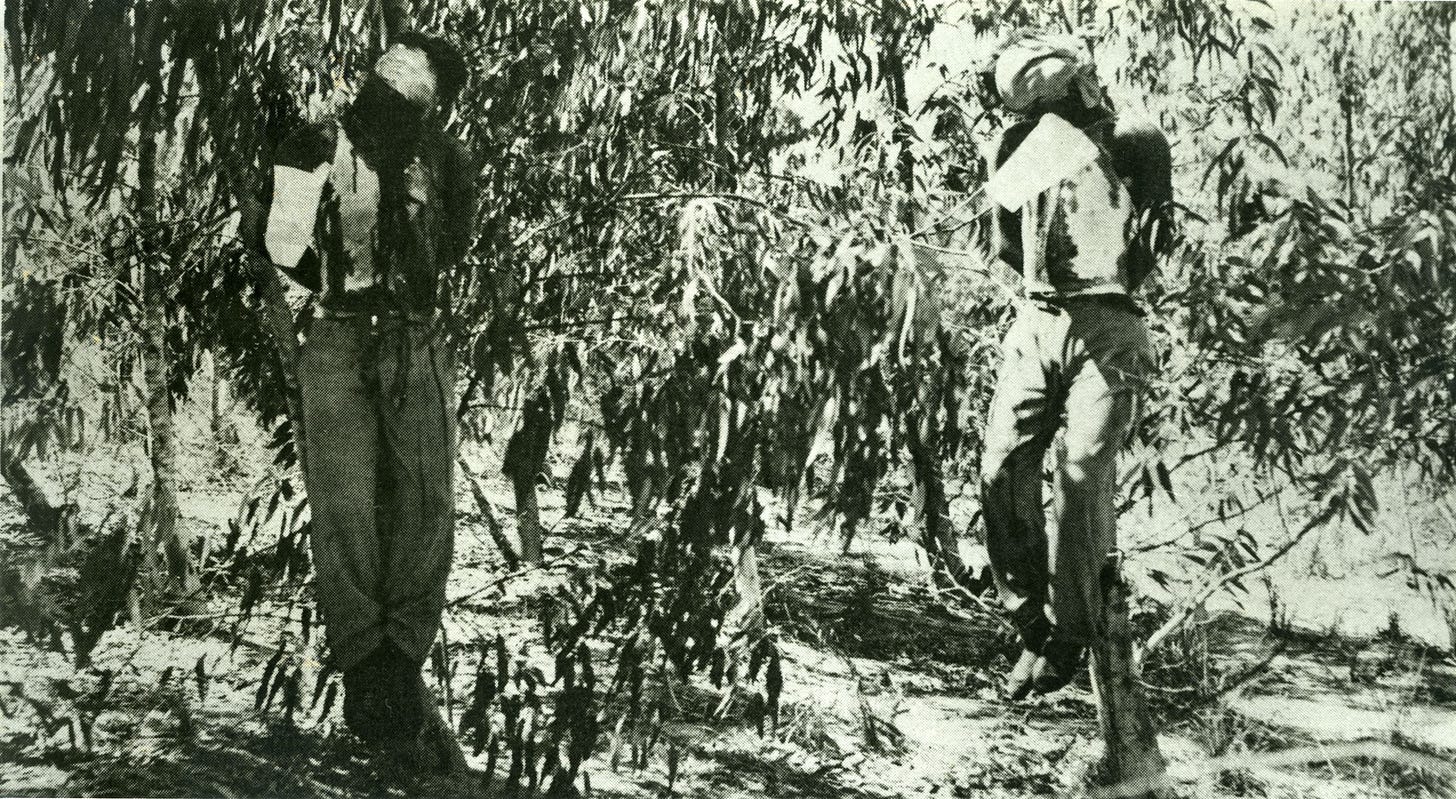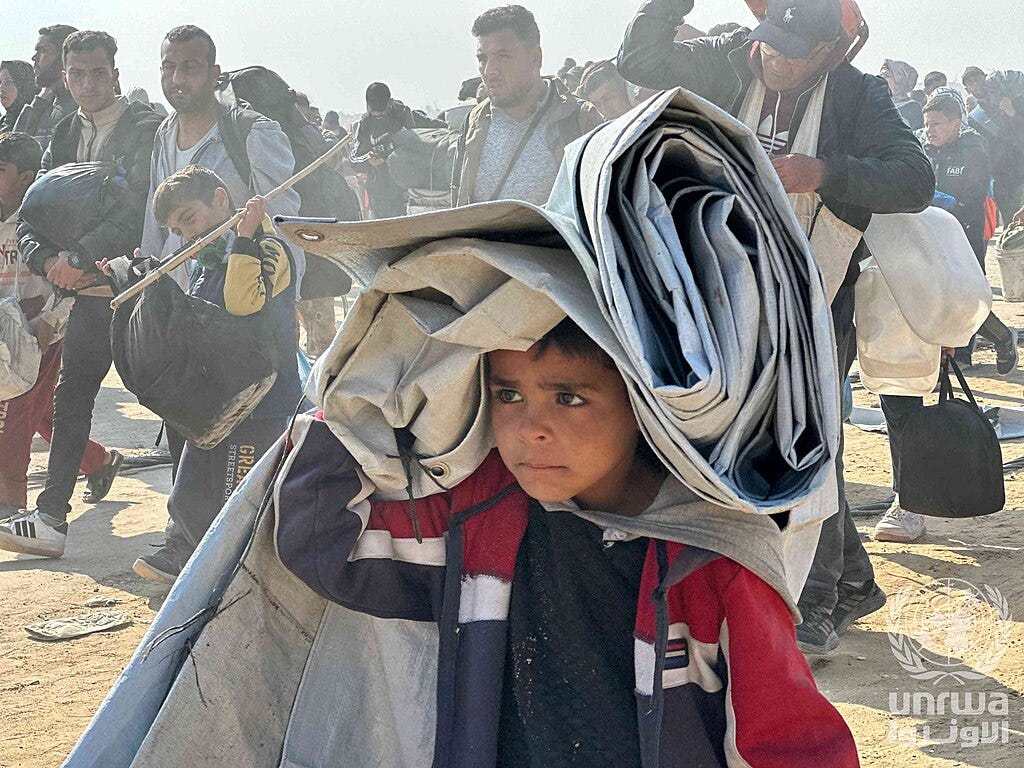How the Likud Party normalized violence against Palestinians
As Benjamin Netanyahu stood before the Knesset1 on 13 October 2025, he did so as the leader of a party with roots in organizations once universally condemned as terrorist groups. Netanyahu recently participated in ceremonies following a ceasefire agreement in Gaza, a war that UN investigators have called genocidal.
The October 2025 ceasefire, brokered by President Trump after two years of devastating military operations in Gaza, came only after international pressure mounted to unsustainable levels. Yet understanding how Israel reached this point requires examining the party that has dominated its politics: Likud, and the string of violence connecting its founding to the present day.
Netanyahu’s Long Shadow
Netanyahu has served as Israel’s Prime Minister across three separate terms (1996-1999, 2009-2021, and 2022-present), making him the country’s longest-serving leader. His 12 consecutive years in office from 2009 to 2021 gave him unmatched influence over Israeli policy, allowing him and his increasingly far-right coalition partners to execute military operations that have drawn accusations of genocide from UN human rights investigators.
In September 2025, the UN Independent International Commission of Inquiry on the Occupied Palestinian Territory2 concluded that Israel committed genocide in Gaza, citing “killing, causing serious bodily or mental harm, and imposing living conditions intended to bring about the destruction of Palestinians”. The commission specifically referenced statements by Netanyahu comparing Gaza operations to “wars of annihilation” from Hebrew scripture.
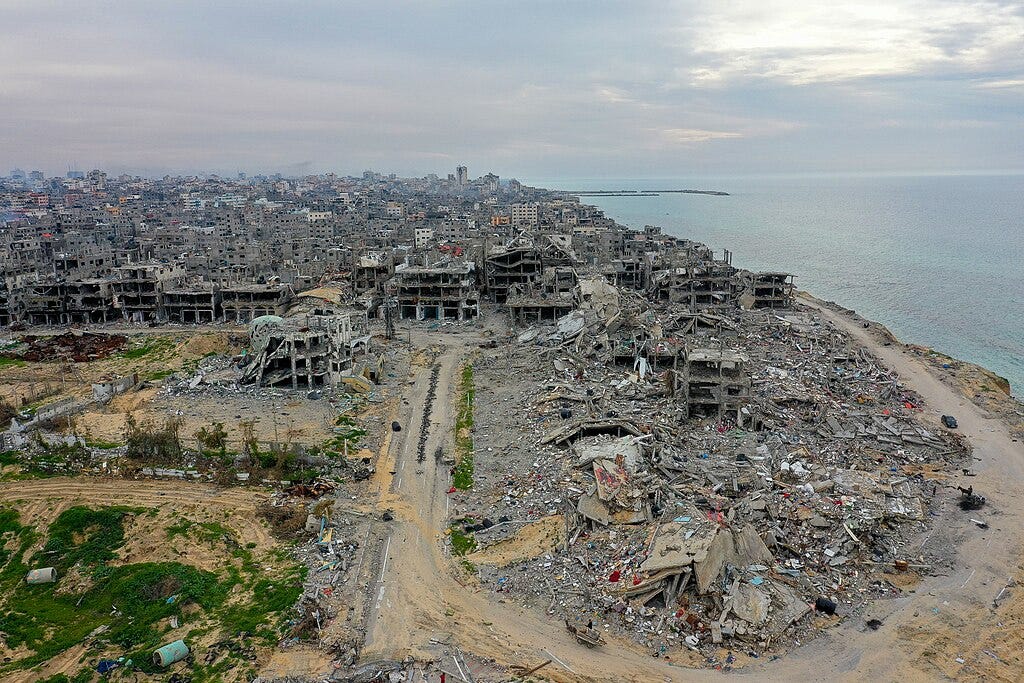
In the background, the dense urban area of Gaza stretches towards the horizon, with more damaged buildings visible along the coastline. The Mediterranean Sea borders the right side of the image, under a cloudy sky, contrasting the devastation with its calm waters. The overall mood of the photo conveys the aftermath of conflict—desolation, loss, and the lasting impact on human habitat.
Despite mounting international condemnation and fractures within his own governing coalition, Netanyahu has consistently defended his approach. Even as coalition partners departed over policy disagreements in mid-2025, leaving him with a razor-thin parliamentary majority, Netanyahu pressed forward with military operations until Trump’s pressure finally forced negotiations.
The Ideological Architecture
Understanding Netanyahu’s political vehicle requires going back nearly a century. Likud was formed in 1973 when Menachem Begin and Ariel Sharon unified several right-wing parties, including Begin’s Herut party. But Herut itself had darker origins: Begin founded it in 1948, immediately after the dissolution of Irgun, the Zionist paramilitary organization he commanded.
Irgun was officially designated a terrorist organization by the United Nations, the United States, the United Kingdom, and other governments. It emerged in 1931 as a splinter from Haganah, the main Zionist paramilitary force, and was built on the ideology of Vladimir Jabotinsky’s Revisionist Zionism.
Jabotinsky, a Russian-born writer, founded Revisionist Zionism on principles of militant Jewish nationalism and territorial maximalism. In 1923, he established Betar, a youth movement launched in Riga, Latvia, explicitly designed to indoctrinate young Jews with nationalist ideology while training them for military operations. Betar became the ideological and organizational foundation for Irgun’s formation eight years later.
A Legacy Written in Blood
Irgun’s operations throughout the 1940s targeted both British colonial authorities and Palestinian civilians. On July 22, 1946, Irgun bombed the King David Hotel in Jerusalem, killing 91 people and wounding 45 more—Palestinians, British officials, and Jews alike.
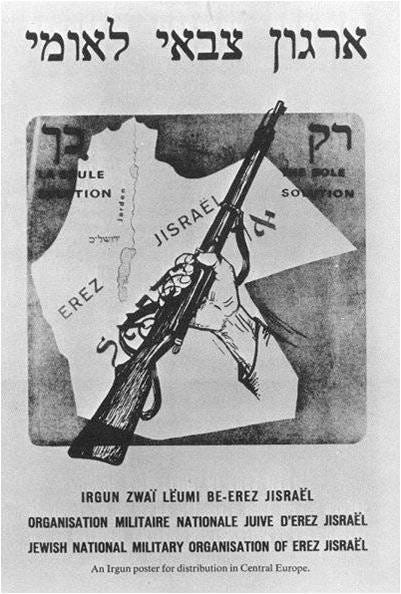
During the Nakba3, Irgun and Lehi forces committed numerous massacres. On April 9, 1948, these groups killed between 100 and 110 Palestinian civilians in Deir Yassin, though inflated figures circulated at the time to maximize terror among Palestinian communities. Historical records document how victims were stripped, photographed, and executed.
When Israel was established in May 1948, Irgun formally disbanded and its fighters were absorbed into the new Israel Defense Forces. Begin, rather than face accountability for terrorism, launched a political career by founding Herut.
His political transformation alarmed many observers. When Begin visited the United States to promote his new party, prominent Jewish intellectuals, including Albert Einstein and Hannah Arendt, published a letter in The New York Times on December 4, 1948. The letter explicitly compared Herut to “Nazi and Fascist parties” and described it as a “terrorist, right-wing, chauvinist organization”.
“Among the most disturbing political phenomena of our times is the emergence in the newly created state of Israel of the ‘Freedom Party’ (Tnuat Haherut), a political party closely akin in its organization, methods, political philosophy and social appeal to the Nazi and the Fascist parties.”
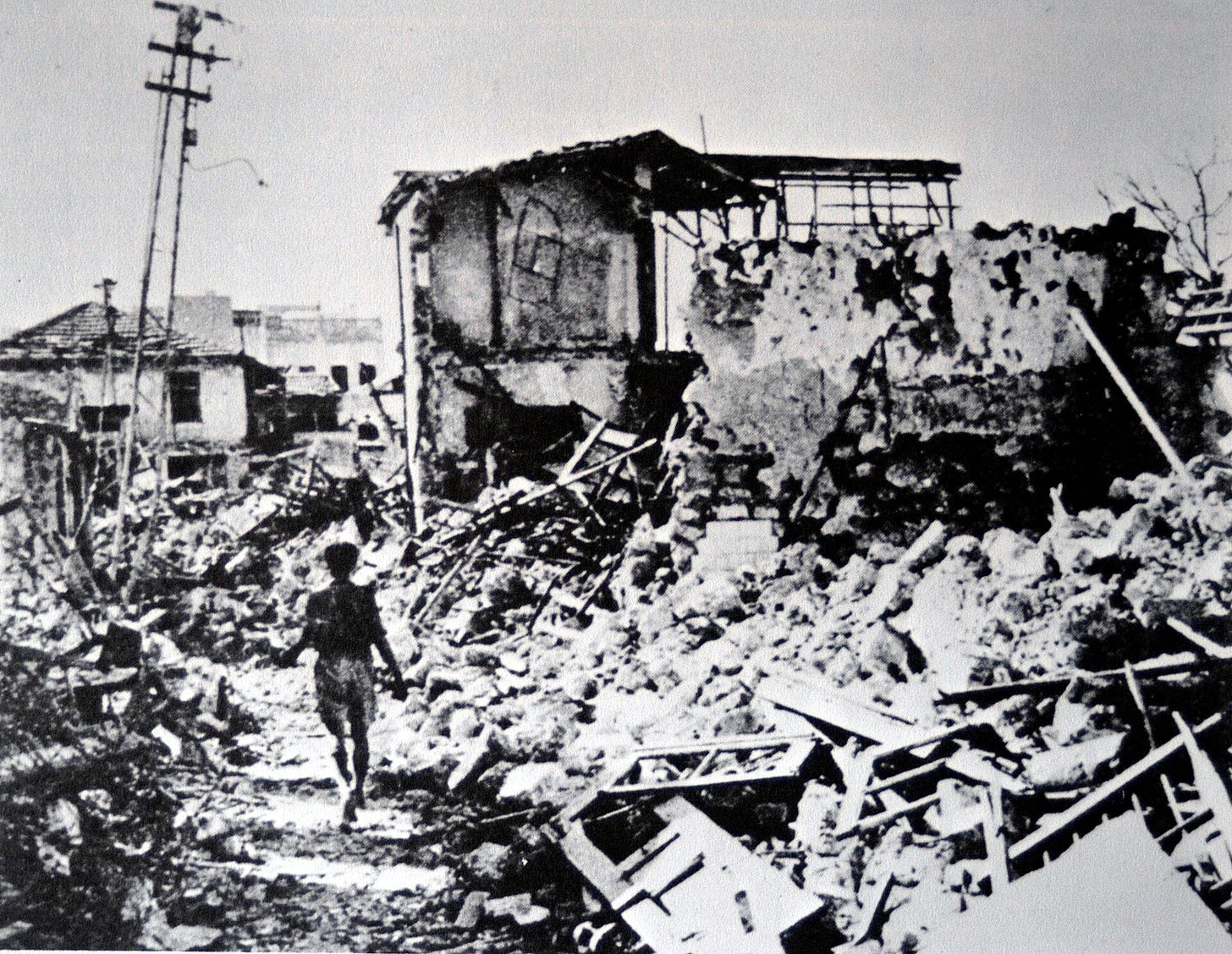
Despite this warning, Herut became a major opposition force in Israeli politics for three decades.
The Massacres Continue
The 1973 formation of Likud brought Begin’s ideology into a broader coalition with other right-wing forces assembled by Ariel Sharon. Four years later, Likud won national elections and Begin, the former terrorist commander, became Prime Minister.
Begin’s government demonstrated that the transition from paramilitary violence to state power changed nothing about the willingness to target Palestinian civilians. In June 1982, Begin ordered the invasion of Lebanon. Three months later, from September 16-18, Israeli forces facilitated and enabled the Sabra and Shatila massacre, where Israeli-backed Lebanese militias slaughtered between 800 and 3,500 Palestinian refugees.
Begin, as Prime Minister, and Sharon, as Defense Minister, authorized the operation. Israel’s own Kahan Commission investigation found Sharon bore “personal responsibility” for the massacre. The UN General Assembly condemned Sabra and Shatila as an “act of genocide” on December 16, 1982.
No prosecutions followed.
Sharon’s Bloody Career
Sharon’s involvement in Palestinian violence extended far beyond Lebanon. As commander of Unit 101 in October 1953, he led a raid on the West Bank village of Qibya that killed 69 Palestinian civilians, many of them women and children, when Israeli forces dynamited their homes. He was also implicated in expulsions and killings in the Palestinian towns of Lydda and Ramle during the 1948 war.
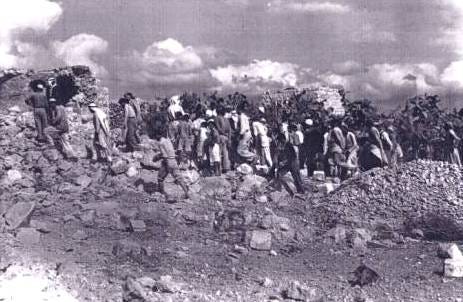
Palestinians and international observers knew Sharon as the “Butcher of Beirut” for his role in the Sabra and Shatila massacre. Yet this record did not prevent him from becoming Prime Minister in 2001. He led Likud until 2005, when he left to form the Kadima party, and Netanyahu returned to lead the party.
An Unbroken Pattern
Netanyahu took control of Likud in December 2005 and has maintained his grip on the party ever since. His leadership represents the fourth generation of Likud leaders—after Begin, Shamir, and Sharon—who have wielded Israeli state power with devastating consequences for Palestinians.
The recent Gaza conflict illustrates this continuity. Despite a ceasefire finally taking effect in October 2025, the two-year military operation resulted in over 67,000 Palestinian deaths, according to Gaza’s Health Ministry. UN investigators documented systematic destruction of civilian infrastructure, obstruction of humanitarian aid, forced displacement, and the targeting of healthcare facilities—actions they determined constituted genocide.
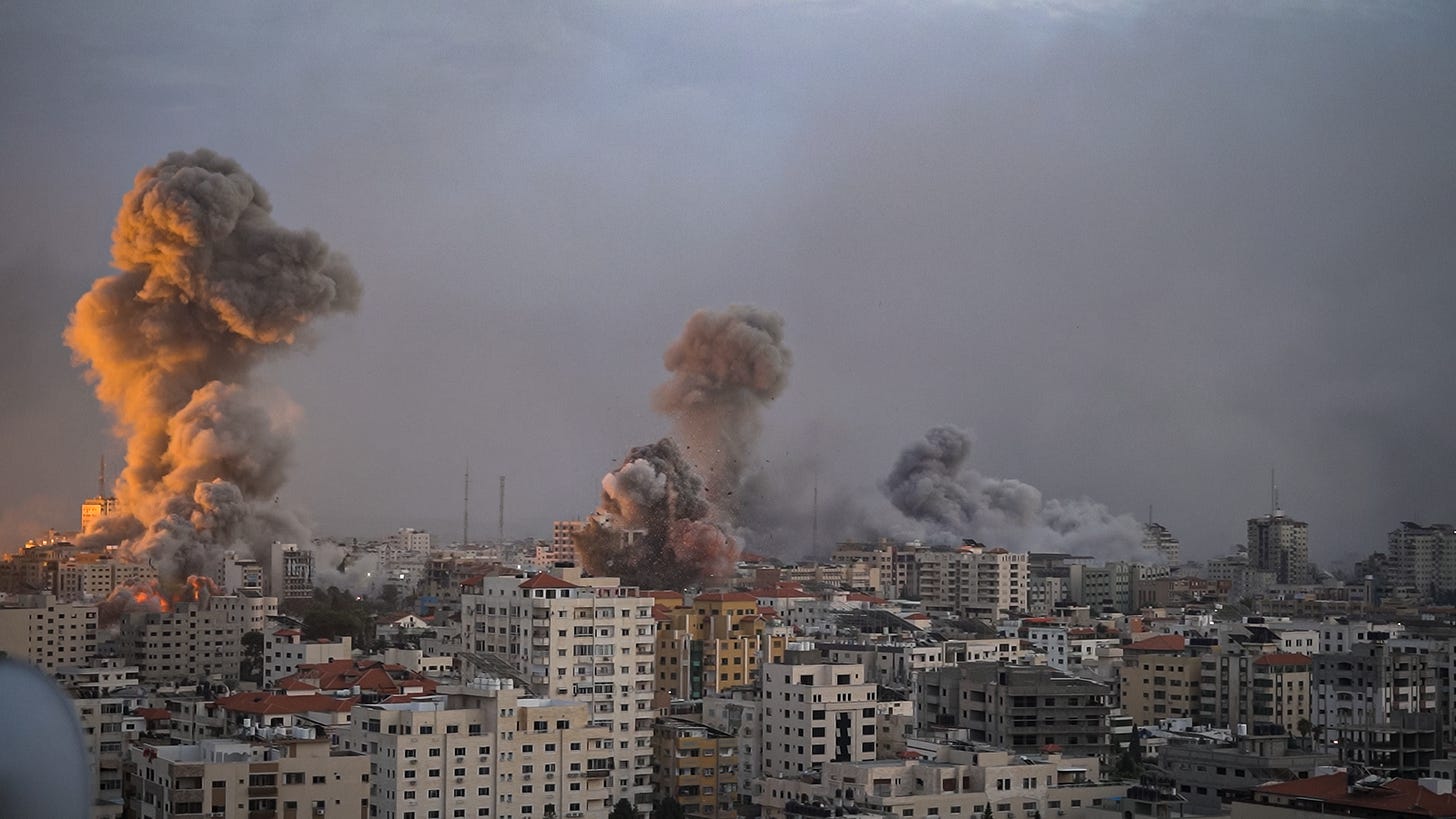
Throughout the conflict, Netanyahu repeatedly stated his intention to maintain Israeli control over Gaza. Even as coalition partners abandoned him over his refusal to end the war, and even as international pressure intensified, Netanyahu continued operations until Trump’s direct intervention forced negotiations.
The Real Story of Israeli Politics
The history of Likud reveals an uncomfortable truth: violence against Palestinians has never been an aberration in Israeli politics but rather its foundation. From Jabotinsky’s militant ideology in the 1920s to Irgun’s terrorist campaigns in the 1940s to the massacres committed by Begin and Sharon to Netanyahu’s operations in Gaza, an unbroken thread connects these actions.
This pattern extends beyond Likud. Successive Israeli governments across the political spectrum have perpetuated occupation, settlement expansion, and military aggression. The difference is that Likud’s leaders can trace their political lineage directly to organizations that the international community once universally condemned as terrorist groups.
What the Einstein-Arendt letter warned against in 1948 has come to pass. The organizations that bombed hotels and massacred villagers didn’t disappear; they became the Israel Defense Forces and political parties. Their commanders didn’t face justice; they became prime ministers.
Now, as the October 2025 ceasefire holds tenuously in Gaza, the international community faces the same question it has avoided for decades: will there finally be accountability for the violence that has defined Israeli policy since before the state’s founding, or will the pattern continue unchecked into another generation?
Al Jazeera. 2003. “Remembering Sabra and Shatila.” September 16, 2003.
Al Jazeera. 2009a. “Profile: Menachem Begin.” March 26, 2009.
Al Jazeera. 2009b. “Profile: The Likud Party.” February 20, 2009.
Al Jazeera. 2022. “Who is Israel’s New Prime Minister Benjamin Netanyahu?” December 29, 2022.
Al Jazeera. 2023. “The Deir Yassin Massacre: Why It Still Matters 75 Years Later.” April 9, 2023.
Al Jazeera. 2025. “Five Key Takeaways from Donald Trump’s Gaza Remarks in Middle East.” October 13, 2025.
CNN. 2025. “October 10, 2025 - Israel-Hamas War.” October 10, 2025.
Einstein, Albert, Hannah Arendt, et al. 1948. “Letter to the New York Times.” New York Times, December 4, 1948.
Human Rights Watch. 2001. “Israel: Sharon Investigation Urged.” June 22, 2001.
Institute for Middle East Understanding. 2014. “Atrocities & Bantustans: The Legacy of Ariel Sharon.” January 10, 2014.
Institute for Middle East Understanding. 2025. “Explainer: The Sabra & Shatila Massacre.” October 13, 2025.
Jewish Virtual Library. 2019. “History & Overview of the Likud Party.” July 30, 2019.
PBS. 2006. “Binyamin Netanyahu.” March 27, 2006.
PBS. 2025a. “Another Netanyahu Ally Quits Governing Coalition, Leaving Israeli Leader with Minority in Parliament.” July 16, 2025.
PBS. 2025b. “As Netanyahu’s Governing Coalition Fractures, What It Means for Israel and Gaza.” July 15, 2025.
PBS. 2025c. “UN Commission of Inquiry Accuses Israel of Genocide in Gaza and Urges Global Action.” September 16, 2025.
Qods News Agency. 2025. “Remembering the Qibya Massacre of 1953.” May 21, 2025.
Reuters. 2025a. “How Did a UN Inquiry Find Genocide Has Been Committed in Gaza.” September 18, 2025.
Reuters. 2025b. “Israel’s Netanyahu Won’t Attend Egypt Summit on Ending Gaza War.” October 13, 2025.
Royal Signals Museum. 2020. “On the 22nd July 1946 the St. David’s Hotel, Jerusalem Was Bombed.” June 30, 2020.
United Nations Human Rights Office. 2025. “Israel Has Committed Genocide in the Gaza Strip, UN Commission Finds.” September 15, 2025.
The Knesset is Israel’s unicameral parliament and supreme legislative body, consisting of 120 elected members who serve four-year terms through proportional representation. It passes all laws, elects the president and prime minister, approves the cabinet, and supervises the government’s activities. The Knesset convenes in Jerusalem and often governs through coalition arrangements because it is rare for a single party to win a majority of seats.
Read here: Legal analysis of the conduct of Israel in Gaza pursuant to the Convention on the Prevention and Punishment of the Crime of Genocide (Section VII, p. 71-72)
The Nakba, meaning “catastrophe” in Arabic, refers to the mass displacement and dispossession of over 750,000 Palestinians during the 1948 Arab-Israeli war, leading to the destruction of more than 400 Palestinian villages and the permanent refugee status for millions of Palestinians. This event was driven by the establishment of Israel and was accompanied by widespread violence and the fracturing of Palestinian society. The Nakba is remembered as a foundational trauma for Palestinians and remains a central issue in the Israeli-Palestinian conflict.


